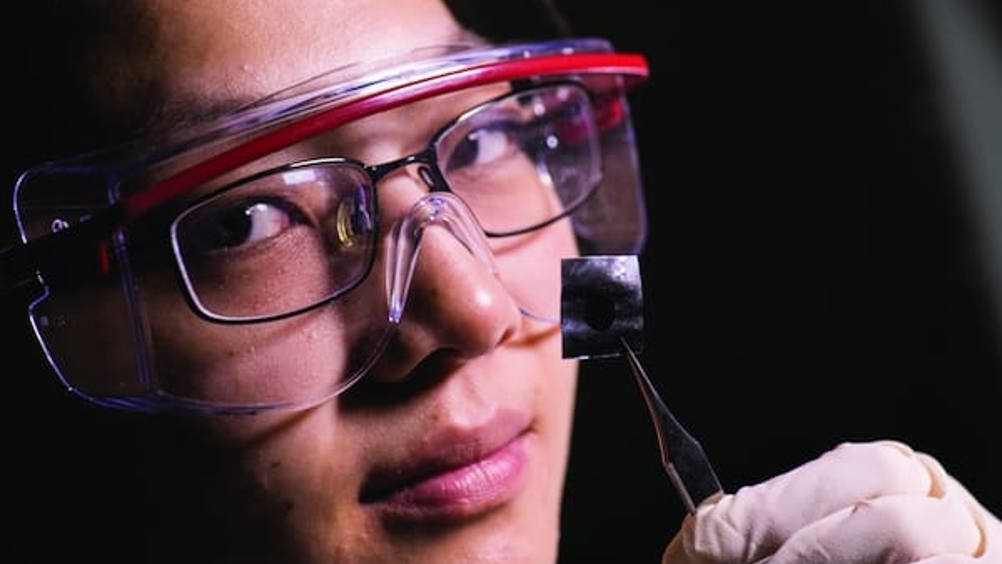Novel cathode adds new twist to flexible dye-sensitised solar cells
Rice University scientists have invented a novel cathode that may make cheap, flexible dye-sensitised solar cells practical.

The Rice lab of materials scientist Jun Lou created the new cathode, one of the two electrodes in batteries, from nanotubes that are seamlessly bonded to graphene and replaces the expensive and brittle platinum-based materials often used in earlier versions.
The discovery was reported online in the Journal of Materials Chemistry A.
Dye-sensitised solar cells have been in development since 1988 and employ cheap organic dyes that cover conductive titanium dioxide particles. The dyes absorb photons and produce electrons that flow out of the cell for use; a return line completes the circuit to the cathode that combines with an iodine-based electrolyte to refresh the dye.
While they are not as efficient as silicon-based solar cells in collecting sunlight and transforming it into electricity, dye-sensitised solar cells have advantages for many applications, said co-lead author Pei Dong, a postdoctoral researcher in Lou’s lab.
‘The first is that they’re low-cost, because they can be fabricated in a normal area,’ Dong said in a statement. ‘There’s no need for a clean room. They’re semi-transparent, so they can be applied to glass, and they can be used in dim light; they will even work on a cloudy day. Or indoors. One company commercialising dye-sensitised cells is embedding them in computer keyboards and mice so you never have to install batteries. Normal room light is sufficient to keep them alive.’
Register now to continue reading
Thanks for visiting The Engineer. You’ve now reached your monthly limit of news stories. Register for free to unlock unlimited access to all of our news coverage, as well as premium content including opinion, in-depth features and special reports.
Benefits of registering
-
In-depth insights and coverage of key emerging trends
-
Unrestricted access to special reports throughout the year
-
Daily technology news delivered straight to your inbox










Water Sector Talent Exodus Could Cripple The Sector
Maybe if things are essential for the running of a country and we want to pay a fair price we should be running these utilities on a not for profit...